2024 Mitsubishi Triton new car review
A trusted Japanese car maker has just launched its rugged new dual-cab but it has new safety technology that some won’t like.
New Cars
Don't miss out on the headlines from New Cars. Followed categories will be added to My News.
Having swum against the tide for years, Mitsubishi took inspiration from its best-selling rivals when developing the new Triton.
Longer and wider than the previous version, it’s a larger and more powerful machine closer in nature to the latest Ford Ranger.
Mitsubishi declined to play the numbers game with the old car, trading bragging rights surrounding towing capacity or engine power to serve up a slightly smaller – and cheaper – proposition.
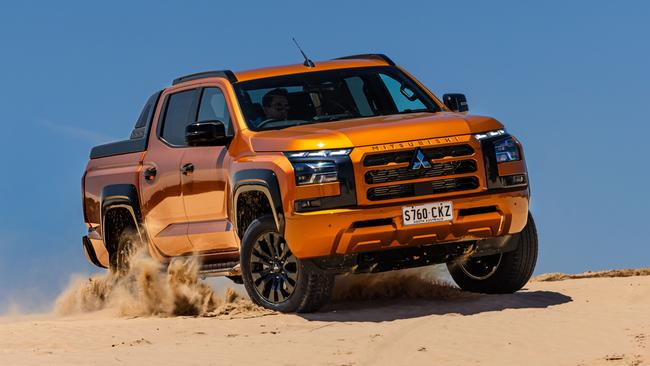
It couldn’t tow 3.5 tonnes, didn’t match the peak power figures of the Ford Ranger or VW Amarok and had a comparatively narrow cabin that reflected a unique approach.
But the new car is bigger, measuring 50mm wider and some 150mm longer between the front and rear wheels. It matches the Isuzu D-Max’s 3.5 tonne towing, claims the same 150kW of power as the Toyota HiLux and employs safety tech such as a new centre airbag to offer similar occupant protection to the Ford Ranger.
A heavily revised 2.4-litre four-cylinder turbo diesel engine benefits from the addition of a second turbocharger to deliver improved thrust. New driving modes help customise the car’s behaviour to work better in various environments.
Those are positive developments, but a six-speed automatic transmission feels like a shortsighted choice when rivals have more ratios, particularly as the Mitsubishi Pajero Sport combines a similar engine with an eight-speed auto.
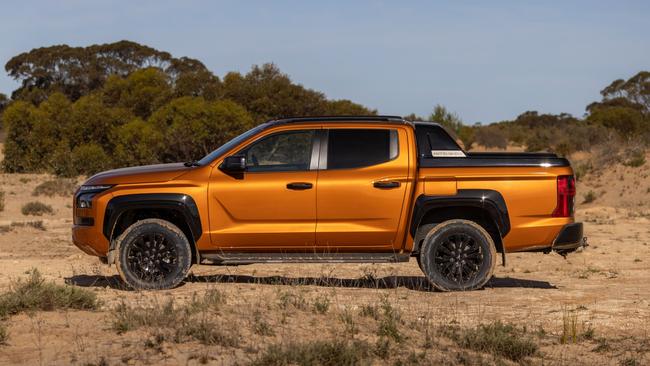
It’s also the first car in this class to be fitted with a driver monitoring system, though we’re not convinced that’s a selling point.
Four-wheel-drive dual-cab versions start from $50,940 plus on roads for the basic Triton GLX and run to $63,840 (about $70,000 drive-away) for the range-topping Triton GSR. That’s about $7000 more than the previous model.
Bluff and blocky styling on the new car looks better than the slightly fussy look of the old car, falling into line with the best-selling Ranger. But there are no muscled-up, wide-body variants to rival the Toyota HiLux GR Sport or Ranger Wildtrak X.
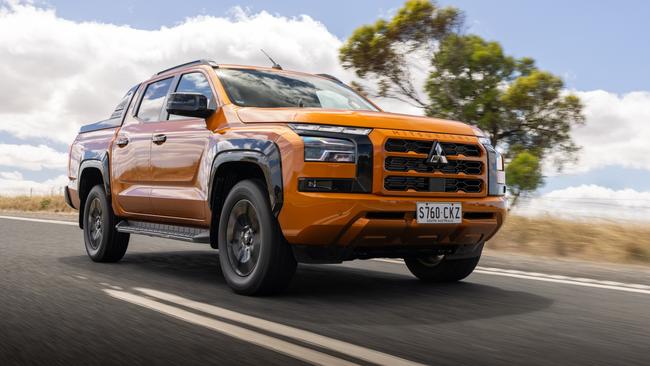
And the interior isn’t a patch on the Blue Oval’s contender.
The Triton feels like a throwback compared to more modern alternatives, let down by conventional analog dials for the driver’s instruments.
Mitsubishi has a proper 12.3-inch digital dash in the Outlander, so it’s disappointing to see it cut corners on the Triton.
The old car’s shift paddles are also missing in action, removing a degree of control for the driver.
The 9-inch central infotainment screen has sat nav and wireless smartphone mirroring, but only comes with a four- or six-speaker stereo, not the 10-speaker Bose unit in Mitsubishi’s SUV or high-grade Rangers.
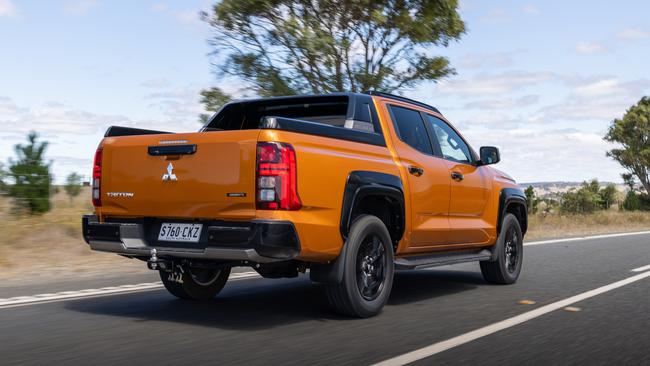
Mitsubishi put more effort into the car’s safety systems, fitting active cruise control and a front cross-traffic alert system to augment the rear cross-traffic alert, blind-spot monitoring and lane keeping assistance found in the older car.
Some of those features become more sensitive if a driver-facing camera detects drowsiness, though the system is far from perfect.
Laughter can be confused for a yawn, which can instigate the sort of warnings, chimes and beeps that make you want to get out and walk.
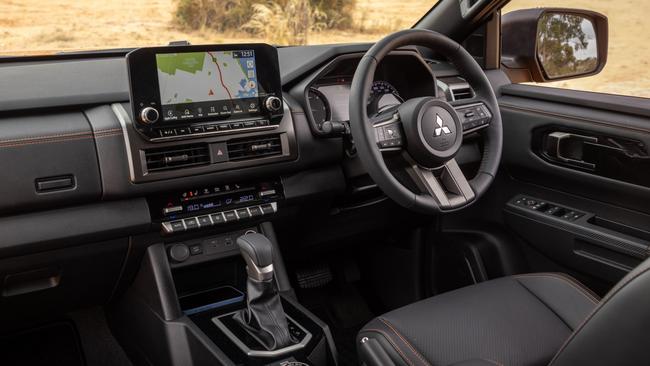
Luckily it’s efficient, using a claimed 7.7L/100km of diesel thanks to the addition of a stop-start system that helped reduce fuel consumption by 10 per cent. Tailpipe emissions are further reduced by an AdBlue fuel additive system that mixes a liquid solution into the exhaust stream to help trap particulates – good news for the environment, but an extra tank to top up at service time.
Mitsubishi backs the Triton with a five-year, unlimited kilometre warranty that doubles to 10 years if you have servicing done through official dealerships.
The bigger body is 115kg heavier in top spec GSR trim pictured here, but the extra grunt from its twin-turbo engine ensures the car’s power-to-weight ratio has improved.
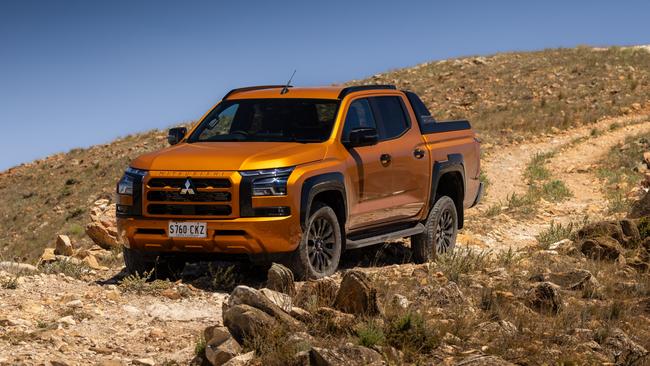
The engine isn’t the smoothest unit going around, lacking the muscular effortlessness of rivals packing 500Nm or more. Quicker steering helps the new Triton feel more accurate on tar, though the extra weight is noticeable in the bends.
We drove the car at its launch in South Australia without any load in the tray, and found that it skipped around and felt unsettled on tarmac and dirt, lacking the composure and comfort of the class-leading Ranger.
VERDICT 3.5/5
Smarter, more spacious and efficient than the old model, the new Triton still lacks the wow factor of class leaders.
MITSUBISHI TRITON GSR
PRICE: About $70,000 drive-away
ENGINE: 2.4-litre 4-cyl turbo diesel, 150kW and 470Nm
WARRANTY/SERVICE: 5-yr/u’ltd km, $2445 for 5 yrs
SAFETY: 8 airbags, auto emergency braking, active cruise control, lane keep assist, front and rear cross-traffic alert
THIRST: 7.7L/100km
SPARE: Full-size
TOWING: 3500kg
Originally published as 2024 Mitsubishi Triton new car review


